|
Luna is now 3 months old and her development as a future ‘handy horse’ is going very well. The stages I am focusing on with her now are herd integration and haltering. There is a lot of differing opinions about when and how to halter train your young horse, but I am going to write about what has worked for me, the reasons why I do what I do and when I do it. For me, ‘halter training’ starts at birth when I first lay hands on the foal and we begin to develop ‘feel’ together. I don’t think of it as a separate subject, just another progression and the addition of a new ‘tool’. Teaching my foals to accept the feel of my hands, and to yield from the feel of my hands is the beginning of the language that will lead to using equipment like halters and leads and then other headgear (like a bridle) to communicate ‘through feel’ to them. ‘How’ you offer this ‘feel’ and the timing of the release of that ‘feel’ is what makes all the difference between a confident, light and responsive horse and/or a dull, non-responsive, unconfident and/or reactive one. Every time I touch my foal, I am trying to remind myself of my response-ability regarding this principle for my horse’s future with me. I’m still a work in progress by the way, and always will be I’m sure! I don’t reach for a foal halter early. I know there is a natural desire in humans to ‘dress’ their foal, very much like the urge to dress newborn babies! - but there are good reasons to hold off on putting a halter on your foal’s head so early, when they are very small and physically vulnerable. The poll area, where the spine comes closest to the outside of the body on a horse, in a foal is very close…and they are born protective of it. The jaws of a predator can disable and kill by closing on this area very easily, the feel of a halter when they haven’t had much preparation and acceptance of touch in this area is just asking for trouble. Closed hands on the end of a lead rope will put pressure here, the foal’s first instinct when feeling this pressure on the poll is to fight by rearing up and pulling away, the feeling of pressure under the chin triggers a reaction to strike with their front feet, sometimes resulting in becoming hobbled by their halter. Sadly, there are many stories of foals who became damaged and even killed because someone at the end of a foal’s lead rope got tight with their hands when leading their foal, causing a ‘fight or flight’ reaction that flipped that foal and broke it’s neck, or damage or death from getting a halter caught on their feet or on something in their environment. That’s all it takes at an early age. So even though I’ve had many, many years of development - practising ‘hands that close slowly and open quickly’, and I’m very thorough in my preparation of a foal, I still leave the halter part of the equation out until the foal has had lots and lots of preparation with learning to ‘follow a feel’ in less vulnerable parts of it’s body. And even though I often say ‘never say never’…I NEVER leave a halter or a neck strap on a horse in the paddock, without the ‘safety line’ of a lead rope or a string with me at the end of it, especially a foal! It’s just not worth the risk, and anyway…I think they look more beautiful naked! From handling with my hands, I progress to a body string, as shown in my first article on the newborn foal. It’s not tied with a knot at all. If I haven’t done enough preparation in the acceptance stage, and my foal has a panic and pulls away leaving me with the string in my hand - that’s my bad. I need to do more prep. Next progression is a neck string, and again, at first I’m not going to tie it. It’s only when my foal is really following the feel of it with NO hesitation and with confidence that I might tie it. I use a knot that doesn’t tighten like a noose, but which has a ‘slip’ so it can be undone easily. I will usually tie the knot high enough on the neck so that the foal’s feet are less likely to get caught in it if it does strike at it. The best result is my foal being confidently prepared enough that it doesn’t have that much of a reaction. I expect my foal to not understand the feel of it at first, they’ll usually plant their feet a bit at which point I will offset it by leading off to the side - preferably towards something or someone it sees as a ‘safe place’. It is quite natural for them to lean against pressure, as well as into it. I use their mother on another halter and lead as a ‘draw’ to help them the first time I do this, as she steps forward with the feel from my hands, the foal is more likely to follow and find the ‘release’ from the feel on it’s own ‘lead rope’. I don’t do any of this unless my mare is completely relaxed and calm, and after those first leading sessions with a string, I will leave my mare loose. I usually have some hay piled there so she’s got a good reason to stick around, whilst the foal and I can interact and she gives off ‘mmmmmm….I’m in my happy place’ vibes. If she shows concern at any point, that is another indicator that I’m off track and need to retreat and do more prep for acceptance. Once my foal is leading happily and well with a neck string, I start thinking of introducing the halter. At first it is just for rubbing the foal, first all over…including it’s head - when they are lying down is a great time to start this. I’ll do several sessions, as many as the foal needs to show confidence, and I’m looking for the foal to show curiosity about the halter. I love it when the foal wants to chew on it, I will offer the halter in the same way I halter all my horses, I will ‘release’ the halter when the foal shows curiosity, lowering it’s head as I lower the halter, putting a little bend towards me…nibbling on it as I take it away. It doesn’t take many repetitions before your foal is helping you halter it. Tying the halter on (or buckling if you have that type of halter) should be an afterthought, and NOT on the first session. DON’T be in a hurry to secure it, and make sure the first time you do that you have a backup in place like a neck string. If your foal gets worried the first time you do secure it and panics you will need to be able to keep it with you, not running around blindly trying to shake it off it’s head. If this happens…again…more prep was required! Once the foal is accepting of wearing the halter (without lead attached, but with neck string as back up) and I’ve done some leading sessions with the neck string whilst the foal wears the halter, then I will progress to having a string through the halter loop (where the clip would go) but open ended so I can allow it to slip through if necessary. Now I have a 2 lead system. This is another ‘supportive’ measure. Be thorough! Connect the dots for the foal, but make sure each ‘dot’ is very clear and accepted before you add the next one. This will really make your progress go well, and ‘non-eventfully’. This is the stage Luna is at now and we are repeating this one in every ‘haltering session’. Do as many sessions as the foal needs before moving on to the next stage. Lastly, once I realise the foal no longer needs the support of the neck string because it is leading without any qualms, confidently and knowledgeably and from the feel on the halter primarily…I’m ready to clip on to the halter directly. But I’m ready to retreat to the previous stage if I feel it is too big a ‘leap’, or if the situation requires it, like a change of environment. All of the above I do in the mare and foal’s ‘safe places’ at first. The mare is the foal’s first ‘draw’, so ask the foal to come towards where the mare is grazing at first then asking for a little ‘away’ yield, and so on. Once the foal is confidently leading ‘away’ from the mare without qualms, I’ll start moving the foal further away, but not all in one session! If you have a second person who can follow with the haltered mare that can be helpful. Pay attention to where you are in relation to where the foal feels ‘drawn’. It might be mum, it might be where they are fed, it might be another member of the herd…you don’t want to find yourself too far from where the foal feels safe. If I need to move my mare and foal out and about into less safe feeling places, I will backtrack, which means sometimes I’ll go back to a neck string, or use a body string, depending on what I assess is the best approach. Developing the ability to ‘read the situation’ and make wise decisions about ‘how and when’ to do things is critical if you want to be really good with horses, you’ve got to be willing and able to adjust. Beware of thinking ‘I think it should be ok’… there’s usually a reason that doubtful thought pops into your head! Retreat and make sure you are ready to support that foal! Things can go wrong fast and strong, if you overstep and the foal and/or mare panics it’s a horrible feeling that can lead to a negative learning experience at best, and horrible mistakes and accidents at worst. Trust your gut instinct…better to be over prepared than caught out because you were unsure but did it anyway! Haltering is an extremely important stage towards everything you want to teach your foal for it’s adult life. Leaving it until your foal is a weanling or yearling is a wasted opportunity at best in my opinion, a disadvantage to future learning opportunities and contributor to other failures at worst. Don’t leave it until you need it, make sure if you need to move your foal by leading it that you have something working really well - just in case that situation arrives that you weren’t planning, like an evacuation for instance, or a visit to the vet for the mare…you’ll be glad you spent the time wisely! * I have uploaded a photo series taken during a halter training session, which shows the progression from neck string to halter to halter and lead rope with 'back up' system of neck string, all whilst mum is contently eating. This was not session 1...but still a 'work in progress'. Halter and lead rope was still a fairly new part of the 'story' to Luna at this point. Neck string was well established 'safety net' fall back system if she had worry, so that I didn't have to use the halter to control her if she panicked. You can see in the photos that the 'lead rope' on the halter was able to be slipped through and released if required. The neck rope is solidly tied with a bowline with a 'quick release' loop knot. Always have a 'plan B'!...and c, d, e if necessary...
0 Comments
Leave a Reply. |
Chris CorbidgeLead Horsemanship Professional Archives
February 2024
Categories |


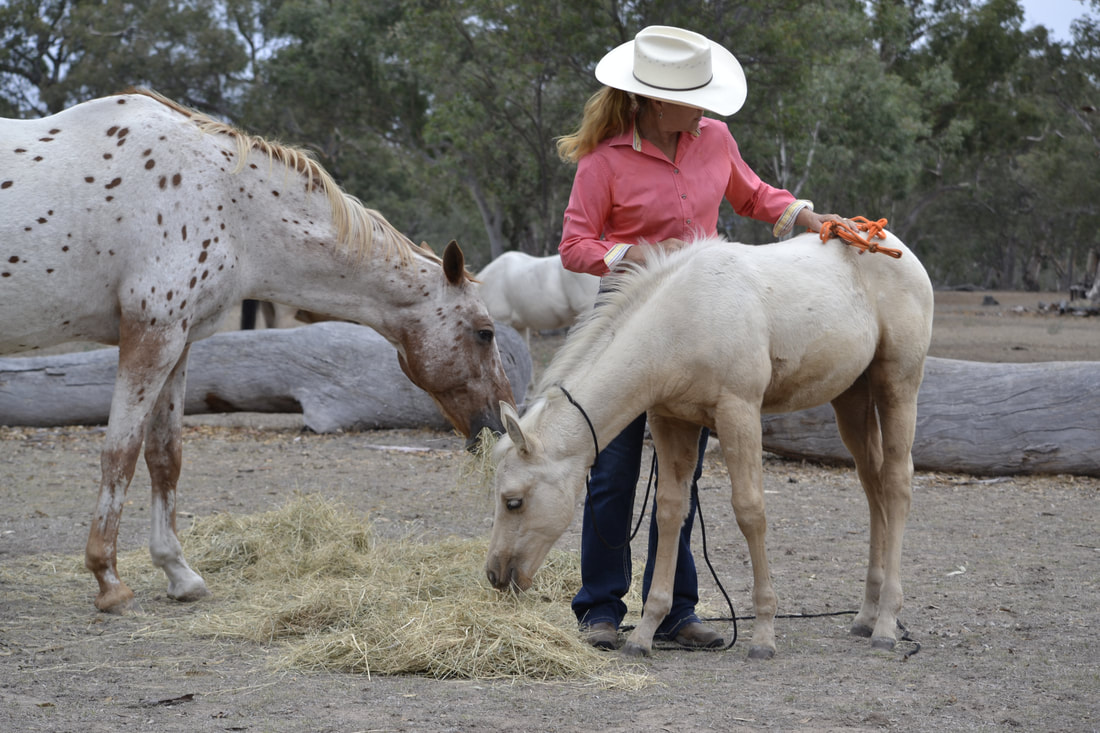
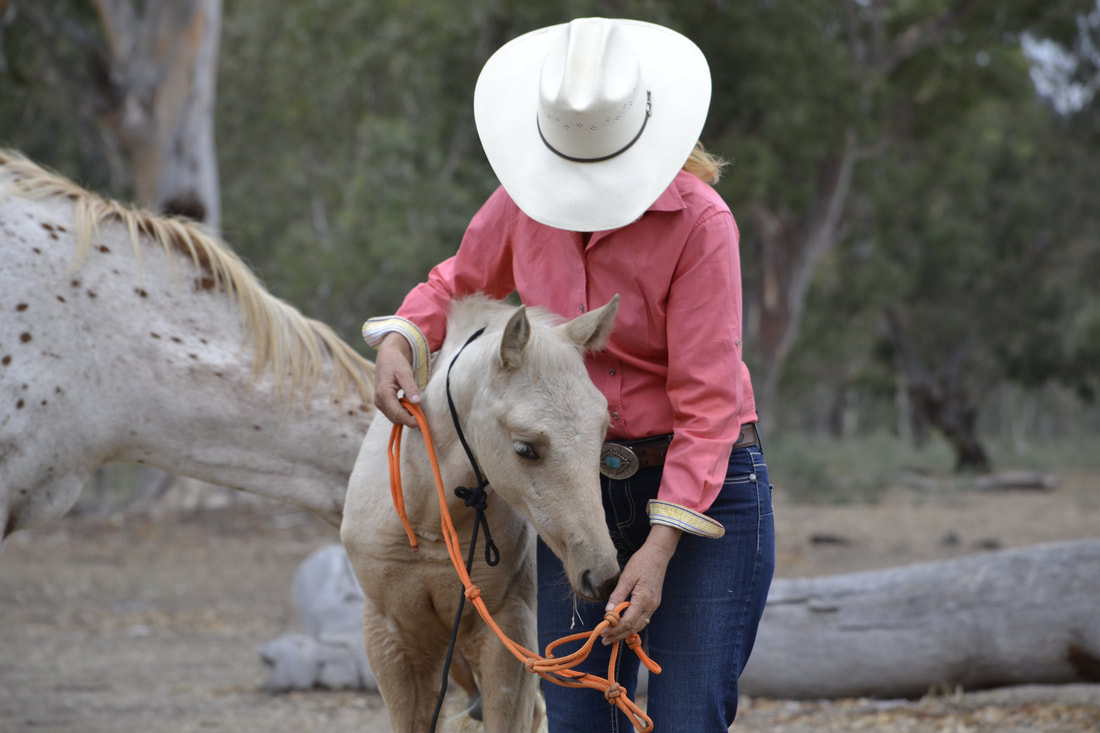

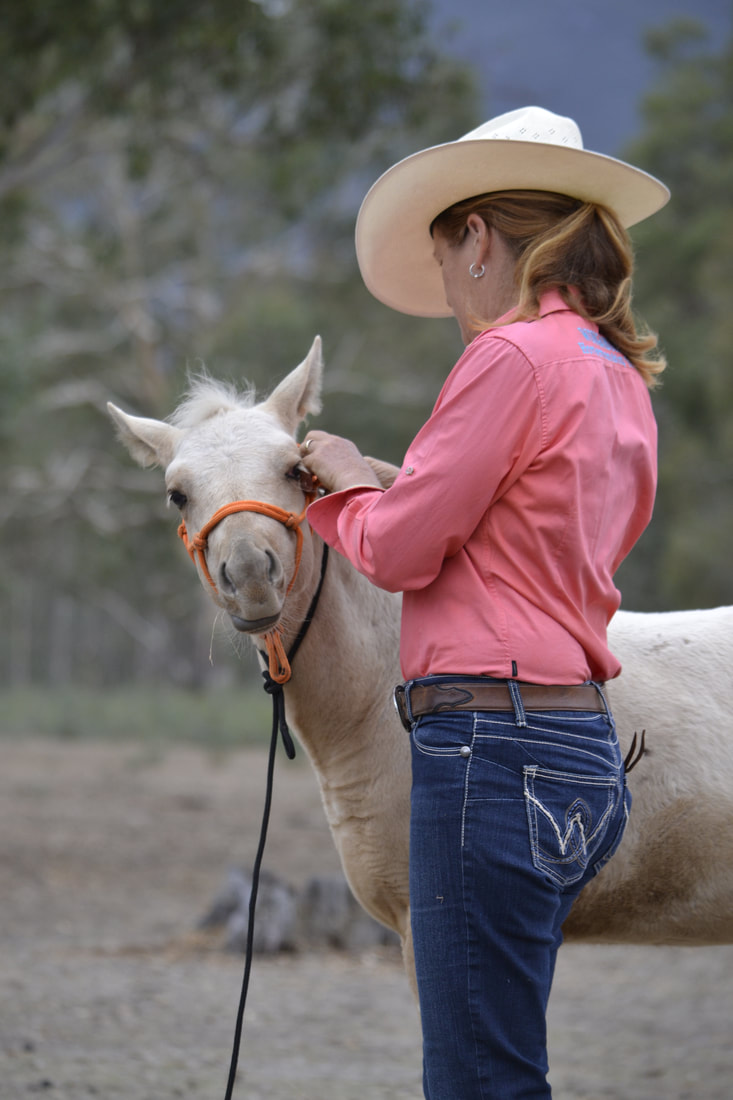
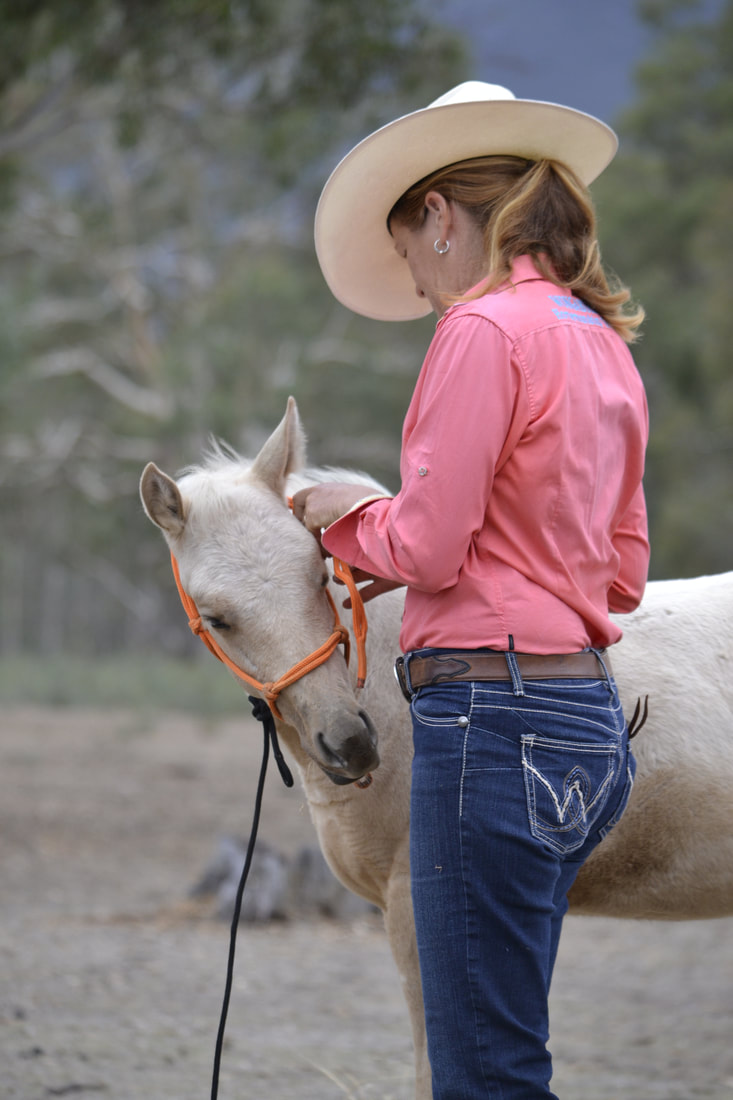
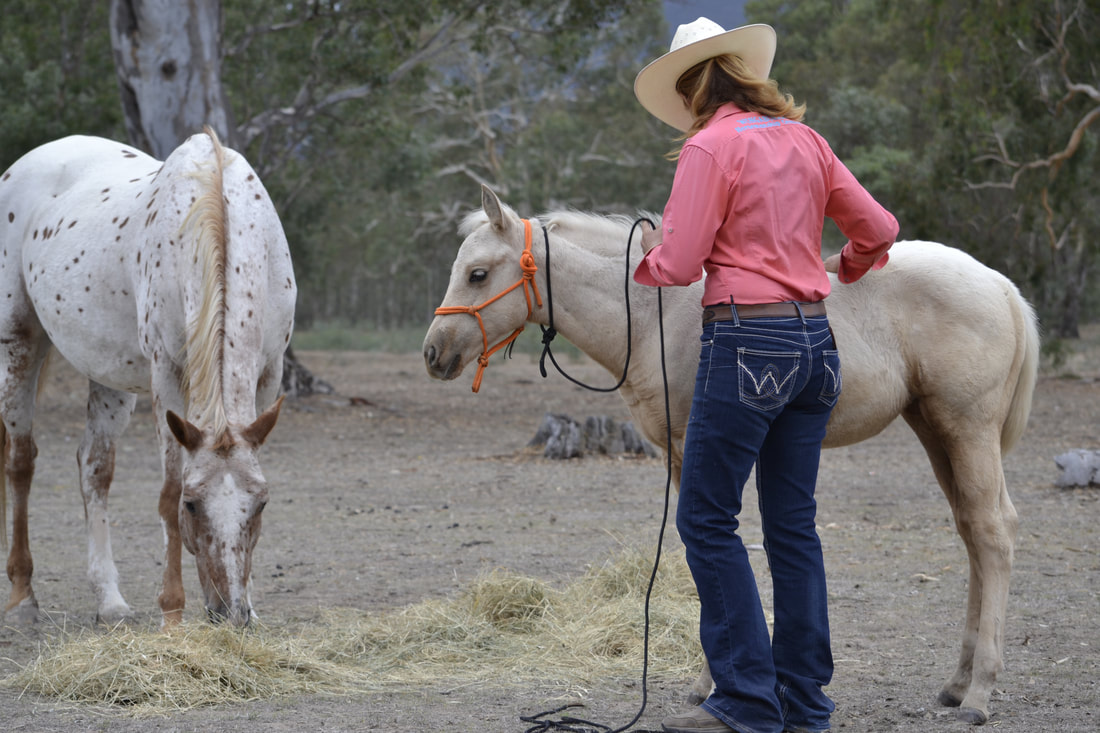

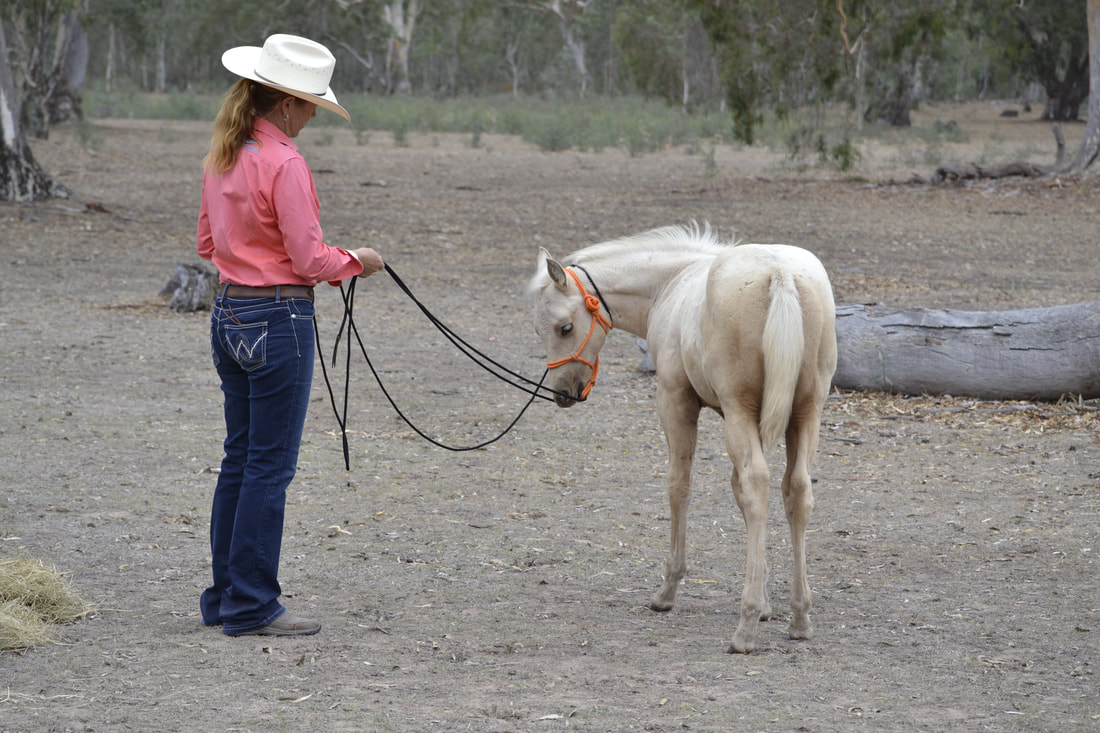

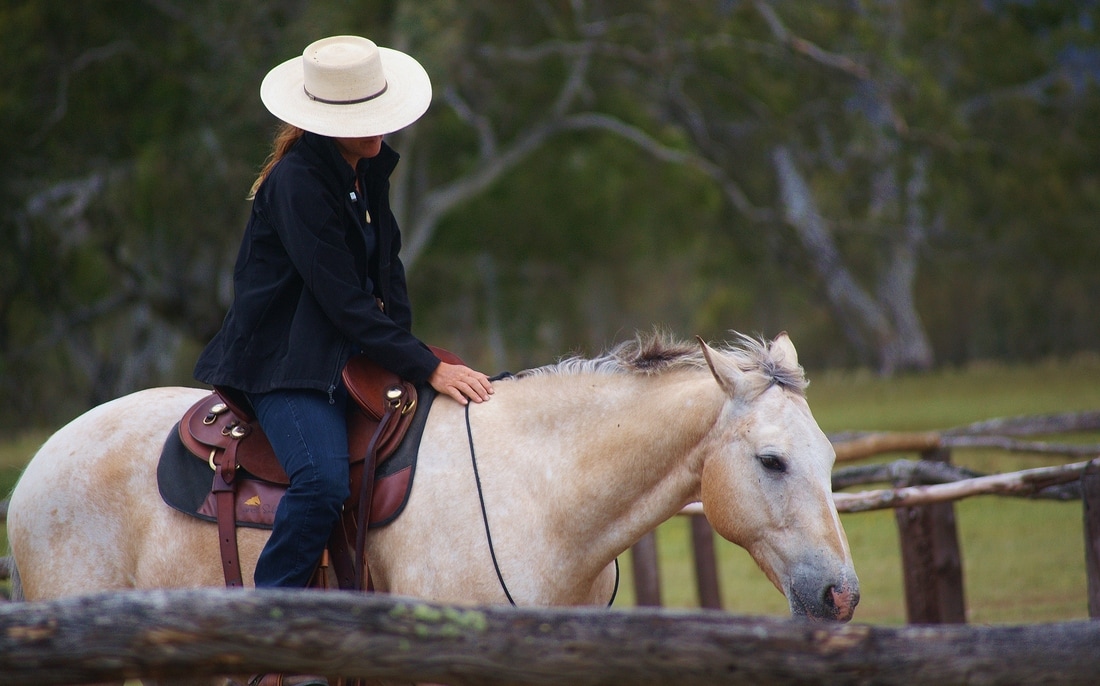
 RSS Feed
RSS Feed